Progress:
- made a Whale!
- developed my circle stitch skills
Goals for next week:
- start a new project, make a bee?
- work on switching between colours
Progress:
Goals for next week:
This week in class we learned about video editing and using videos in the classroom. During our lesson, we broke out into breakout rooms and worked on an activity exploring youtube videos. For my reflection this week, I will be responding to the questions from the activity.
I think that there are definitely a lot of advantages of using Youtube videos as an educator. First of all, I am currently using Youtube as a place to store and share my videos for my Free Inquiry project for this course and I have really enjoyed it. By being able to upload my videos unlisted and only have them viewable by those who have access to the link to it, I get the amount of privacy I look for in a video sharing service. Not only that, but I have my videos on Youtube which is what I would consider being the most well-known video sharing service on the internet. Moreover, educational videos are quick and easy ways to teach important content to students. Videos satisfy the needs of both visual and auditory learners and add inclusivity to lesson.
With these advantages, it is also important to consider the disadvantages. When using Youtube, there is always a tab to the right of the video you’re viewing is a tab full of recommended videos that are typically unrelated to the video you’re watching. This cannot be changed and may distract students when presenting the video. Furthermore, if the kids are watching the videos on their own IPads, they can click on those videos instead of watching the video they are supposed to be watching. In all, I think that when it comes to Youtube videos in the classroom, the advantages outweigh the disadvantages and Youtube videos will definitely be part of my teaching practice.
Progress:
Goals for next week:
This week our class was lucky enough to be visited by the principal of the Pacific School of Innovation and Inquiry (PSII), Jeff Hopkins. After last week’s discussion with Trevor MacKenzie, I think it was really insightful to learn how a school could be based on this inquiry process. I really like the steps of developing a set of questions, doing research, developing new questions, and developing learning outcomes that Jeff Hopkins talked about. I would definitely consider following those steps with my future students. Jeff made a great point about how open-ended the elementary curriculum is here in BC. As future elementary school teachers, we are going to have a lot of freedom when choosing how to cover the curriculum and free inquiry is a really good option that engages students and leads to holistic learning. I find it so interesting that as a society we generally accept that everyone is unique but when it comes to education, we generalize everything and expect everyone to be able to succeed. Over time, as we are going towards inclusion and accepting diversity, yet we definitely have work to do. With that said, I think that inquiry-based learning is definitely a step in the right direction.
Progress:
Goals for next week:
This week in class we were visited by guest speaker Trevor MacKenzie. We started out by looking at the following diagram and talking about the types of student inquiry.
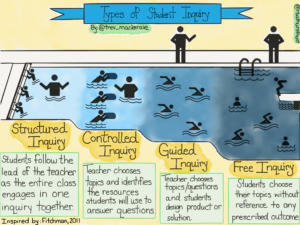
https://www.trevormackenzie.com/exclusive-sketchnotes
I really like this visualization of student inquiry. In fact, that semester in my seminar for my Wednesday school visits, the teachers that lead the seminar showed us this diagram when we were doing our own free inquiry projects. By scaffolding the types of student inquiry and relating them to a swimming lesson in a pool, these concepts become clear to teachers, students, and parents alike. I think that I will definitely put this or something like this up in my future classroom so that I can create a shared understanding of these concepts.
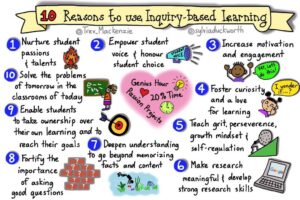
https://www.trevormackenzie.com/exclusive-sketchnotes
Moreover, we explored 10 reasons to use Inquiry-Based learning. I think that this graphic depicts some compelling arguments as to why Inquiry-Based learning should be incorporated into the modern classroom. Reading this list, I certainly want my classroom environment to be composed of all of these things. We were asked to read this list and decide what we are lacking. Now, because I haven’t had much teaching experience yet, I had a little bit of a hard time answering this question. Most of what I think is my teaching style is completely hypothetical and I am not sure what will be my strengths and weaknesses until I can put my teaching into practice. With that said, I picked number 6, “make research meaningful and develop strong research skills”, as something that I want to develop. I am confident in my own researching skills, however, I am not too experienced in adapting my skills to more child-friendly tools. I hope to explore this concept with my Ed Tech inquiry this semester and transform this uncertainty into an asset in my future classroom.
Progress:
Goals for next week:
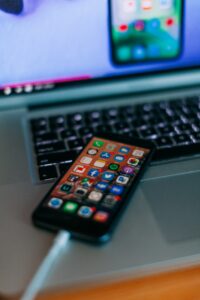
Photo by Szabo Viktor on Unsplash
This week we welcomed guest speaker Jesse Miller into our classroom. With his presentation, he brought a very interesting conversation about social media and how it relates to education.
Our discussion began by talking about the role of social media in the classroom. When it comes to integrating social media into the classroom as tools for projects, I think that it’s unnecessary and avoidable. There are plenty of technological tools that could easily replace social media’s potential role in the classroom that are much less risky and reliable for students to use. With that said, I’m not saying social media doesn’t belong in the classroom as a very important topic of conversation. I would say that my generation is very unique in its ability to have grown up at the same time that the internet has. Personally, I remember Instagram coming out just around as I was old enough to use it and using first-generation iPod touch’s to text with my friends on Kik instant messenger towards the end of elementary school. I never really had the problem of social media negatively influencing my life when I was too young because generally, the technology just didn’t exist yet. With that said, I cannot say the same for future generations. I know that social media use is going to be a pressing topic in the young lives of my future students and something that will be frequently discussed with their parents. Though I don’t think I will necessarily integrate social media use in my classroom, I will frequently have discussions about it. I think that it is necessary to talk about the dangers and benefits of social media and how to use it in a healthy way.
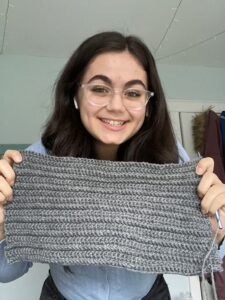
Week 3 – Crocheting with Raquel
Progress:
Goals for next week:
This week I had a lot of fun learning about editing photos in PowerPoint. I would say that I was already familiar with photo editing before class but it was interesting learning about it from a teaching perspective and brainstorming the ways that it could be useful for me in my future career. With that said, I think that for this blog post I am going to share some interesting Bernie creating that I made during the class. Enjoy the following Bernia visits UVic series:
Bernie at the Library/Fountain
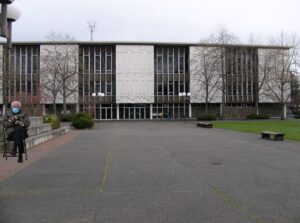
“UVic Library” by firemind is licensed under CC BY-NC-SA 2.0
Bernie on the Bus

“8097: 14 UVIC” by DennisTsang is licensed under CC BY-NC-SA 2.0
Bernie at Clearihue
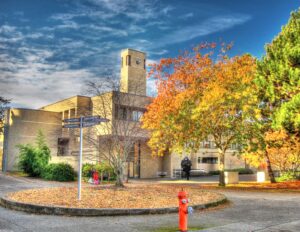
“Clearihue building .. UVIC . HDR” by Nick Kenrick.. is licensed under CC BY-NC-SA 2.0
Bernie on Zoom
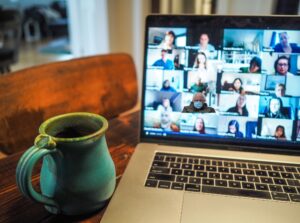
Photo by Chris Montgomery on Unsplash